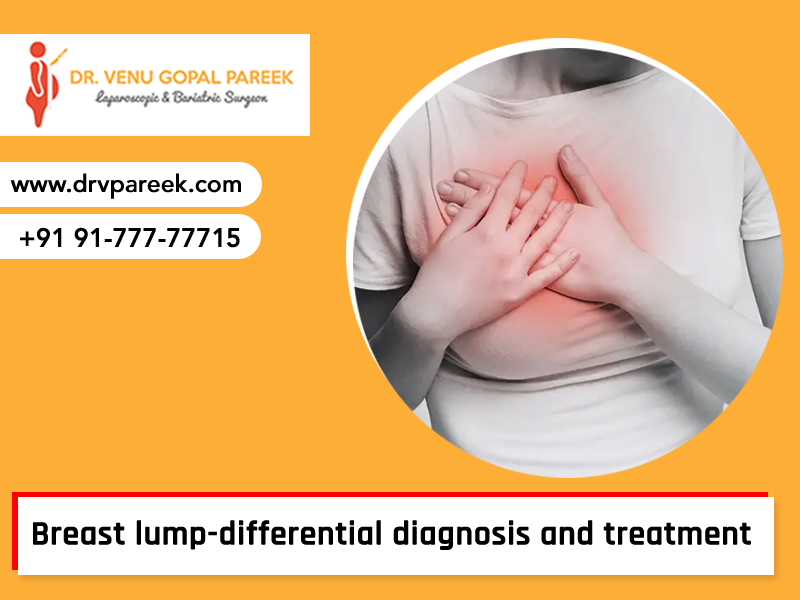
A mass-like lesion that develops in the breast is known as a breast lump. Breast lumps differ in size and texture and can cause pain. Some don’t find it through a physical exam or imaging exam. Most lumps in the breast are benign, which means non-cancerous. And lumps are uncommon in children and teenagers. The majority of these lumps are seen in women over their 40’s.
Your doctor will likely do a physical exam to check for lumps on your chest. To determine if this lump is benign, your doctor will likely order a mammogram and a chest ultrasound. In addition, breast MRI, PET / CT or scintigraphy can be performed. If the lump is benign, then no further action is required. However, your doctor may want to monitor it to see if it changes, grows, or disappears over time.
If the tests are inconclusive, further tests may be needed. If the lump is confirmed as cancer, then surgery is usually performed, and additional treatment may be required like radiation therapy, chemotherapy, or hormone therapy.
This article provided by Dr Venu Gopal Pareek gives more information about breast lump-differential diagnosis and treatment.
What is a breast lump?
A mass that develops in the breast is known as a breast lump. Depending on the type, the breast lump can be large or small and hard. Some lumps cause pain, while some lumps go unnoticed until identified during imaging tests.
Lumps can be found by women who perform breast self-exams or by their doctors during a physical exam. A suspicious lump may also be found during the annual screening mammogram. Although not uncommon, a lump on the chest can appear in men.

Causes of Breast Lumps
There are numerous reasons for a breast lump, including:
- Soft breast cysts fluid-filled sacs
- Milk cysts, associated with milk-filled sacs, which may appear during breastfeeding
- Fibrocystic breast, a condition in which the breast tissue feels lumpy and is sometimes accompanied by pain
- Fibroadenomas, which are non-cancerous, rubbery lumps that easily transfer to breast tissue and rarely become cancerous
- Hamartoma, which is a benign tumour-like growth
- Intraductal papilloma, small, non-cancerous tumour in the milk ducts
- Lipoma, a slowly growing, non-cancerous lump of fat
- Mastitis or breast infection
- Injury
- Breast cancer
How are breast lumps diagnosed and assessed?
Most lumps in the breast are benign. Evidence that the lump is not cancer often includes imaging tests such as:
- Mammography: Mammography utilizes low-dose X-beams to examine the breast. In this type of imaging, the breast is exposed to a small amount of ionizing radiation to get an image of the inside of the breast. At the start of the evaluation, two individual images or two tomosynthesis images (also known as a 3-D mammogram) are made of each breast. Additional images may be required. For more information on X-rays, see the safety page.
- Breast ultrasound: A breast ultrasound uses sound waves to create an image of the inside of the chest. A breast ultrasound can take pictures of the breast area that may be difficult to see on a mammogram. It can also help determine if the breast lump is hard or liquid.
- Chest MRI: A Chest MRI uses a strong magnetic field, radio frequency pulses and a computer to create detailed images of the inside of the chest. MRI is useful for assessing lumps in the breast that are not visible on a mammogram or ultrasound – although it may not be suitable for all women. Your doctor will help you determine if a chest MRI is right for you. Chest MRI requires injection of a contrast agent.

If this test shows that the lump is harmless due to its appearance, no further action should be taken. Your doctor may want to monitor the area to see if the lump in your breast has changed, grown, or disappeared. If these tests do not clearly show that the lump is benign, a biopsy might be required. One of the following image guidance procedures can be performed:
- Ultrasound Biopsy: During this type of biopsy, the radiologist will give local anaesthesia and use ultrasound images to identify the lump and then insert a thin sample needle into the lump to remove some tissue assessment under a microscope. The biopsy procedure is usually quick, but it can take several days to complete the final tissue analysis (pathology report).
- Stereotactic (X-Ray Guided) Biopsy: During this type of biopsy, the radiologist who uses a digital mammography X-ray machine to image the problem area gives local anaesthesia and then inserts\ a sample needle into this thin tissue sampling site for further evaluation.
- Magnetic Resonance Imaging – Biopsy: During this type of biopsy, the radiologist will use magnetic resonance imaging to appoint a local anaesthetic to locate the affected area and then place a sample needle in that location to remove the sample from the thin tissue for further evaluation.
Often, the radiologist will place a small metal marker (about the size of a sesame seed) in the area where the tissue sample is taken so that the remaining lumps don’t need to be examined further on the next mammogram.
If you need a biopsy, it is important to choose a skilled facility, preferably one where a radiologist specializes in breast imaging. A measure of the breast biopsy facility’s ACR accreditation status.
How are breast lumps treated?
Your doctor will need to determine the cause of your breast lump before creating a treatment plan. Not all breast lumps need treatment. If you have a breast infection, your doctor will likely prescribe antibiotics. If you have a cyst, the fluid is drained. The cyst usually goes away after drying. Once the cause of the lump has been diagnosed, treatment can be started.
- Mastitis: If you are breastfeeding, your lump may be caused by mastitis, an infection in the breasts of breastfeeding women. Breast infections are common, especially in nursing mothers or pregnant women. If an infection causes a lump on your chest, you will be given antibiotic therapy until the infection clears and the lump disappears.
- Breast trauma: If an injury or trauma causes a lump in your breast, the main treatment consists of a combination of pain reliever and ointment to heal the damaged tissue in your breast. Ointments that penetrate deep into the skin and act on muscle injuries are prescribed, together with pain relief, if necessary. Over-the-counter drugs are sufficient unless your doctor prescribes something that contains steroids.
- Breast cysts: Some lumps on the chest are major cysts or lipomas (which are benign masses of dough). In this case, treatment is not mandatory, as it will not harm or affect your health. Surgery under local anaesthesia is needed.
- Drainage and aspiration to treat lumps in the chest: Needle aspiration can be done to remove serous or purulent fluid or pus in the chest. Local anaesthesia is used to numb the treated area so that you don’t feel pain.

If the lump turns out to be breast cancer, treatment may include:
- Lumpectomy or lump removal
- Mastectomy, which involves removing breast tissue
- Chemotherapy, which uses drugs to fight or kill cancer
- Radiation, a treatment that uses radioactive rays or cancer-fighting materials
Your treatment will depend on the type of breast cancer you have, the size and location of the tumour, and whether the cancer has spread beyond your breast.
If there is a cancerous lump, surgery is usually performed. The surgeon will explain suitable surgical options and provide you with the information necessary to make that decision. You may have to consult other doctors many times for additional treatment, including radiation therapy and chemotherapy or hormone therapy.
Conclusion:
In most cases, some types of breast lumps, such as fibroadenomas, don’t need to be removed or treated at all. That’s why it’s important not to draw any conclusions when you find a lump in your breast. Your doctor can help you determine if the lump needs further testing and if treatment is needed.
If you are at high risk for breast cancer, get a mammogram every year. You can get it at a younger age. You can also get ultrasound projections. Breast magnetic resonance imaging is sometimes used as an adjunct to mammography in certain women at high risk of developing breast cancer. Talk to your doctor to choose what is best for you.
Early detection of breast cancer can improve the prognosis and chances of cure of cancer. For this reason, women are advised to have their breasts checked regularly and see a doctor if a lump is found. For more information about breast lumps and the best treatment, meet Dr Venu Gopal Pareek; call us at 9177777715.







